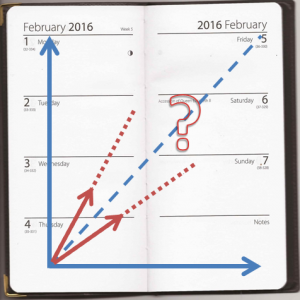
“Slack” is a central idea of The Church of the Sub-Genius. They don’t define “Slack”, but they imply say that J.R “Bob” Dobbs is the embodiment of it.
I’m careful to respect the beliefs of others, even when I’m not sure they expect to be taken seriously, but you can find useful ideas in the strangest of places!
One way of looking at slack, is as time which is not allocated to productive activity. If we use this definition:
How can “slack” possibly make a project more successful?
Why we all need a little Slack
- One reason for including a little slack is to account for uncertainty in estimates. If we schedule every task exactly the amount of time we think it will take and no more, and anything runs over time, then our completion date will start to slip.
- Another reason for allowing a little slack is to allow people to review what they are doing (to “Think”, to use a once popular slogan). That way they can identify ways of doing their work more effectively and possibly improving their own productivity.
- Finally, machines (like the gears in the illustration) which are operated without adequate clearances tend to require extra energy to drive them and break down more frequently. On the other hand, if clearances are too great, then gears become noisy and inefficient.
How do we know that we have the right amount of “slack”?
I am not arguing for inflating all estimates. Inflated estimates simply increase costs. Too much slack is as bad as too little. The signs that we have the wrong amount of “slack” or contingency are:
- Too little slack: There is always difficulty completing any task on schedule. Even slight problems cause significant delays. Of course, there may be other reasons.
- Too much slack: Everything is completed easily on schedule – in fact “the job is expanding to match the time available”.
How do we add “slack” to our project plan?
Slack can be added to individual tasks or to the project as a whole. It can also be added as recognised lower priority activities which we can decide to sacrifice if we need to. There are arguments for and against all approaches. Whatever approach you take, you should try and track how you are using any contingency you have added to your plan.
Is there the appropriate amount of “slack” in your project?
Look at whatever you are working on.
- If the estimates are right “on average”, do you have enough “slack” to allow for the inconsistencies?
- Do you have enough “thinking time”?





